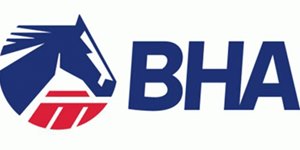BHA: Equine Vision Research Leads to Trial of New Fence


In an Oct. 10 release, the British Horseracing Authority reported that scientific research into equine vision has led to a trial of a new fence and hurdle design to further improve safety in jump racing
According to the release:
• Research at the University of Exeter shows that horses see better and may jump differently over white and yellow obstacles compared with the orange currently used on hurdles and fences;
• The Racecourse Committee has recommended trial use of fluorescent yellow for all hurdles and guard-rails, and fluorescent white for take-off boards at fences;
• The trial will be rolled out first at training yards before being used in a live racing environment, and has the objective of making jump racing safer for horse and rider;
• Results of the research will be shared with other jurisdictions and equine pursuits.
In 2017 the British Horseracing Authority (BHA) and Racing Foundation commissioned and funded research into equine vision as part of improving safety for horse and rider. The research was undertaken by Dr. Sarah Paul and Professor Martin Stevens of the University of Exeter with the aim of improving obstacle visibility for the equine athlete, therefore enhancing the welfare and safety of horses and jockeys through reducing the risk of falls and injuries.
Presently, the color used on hurdle frames and fence take-off boards and guard-rails is orange, based on human vision. However, horses have reduced color vision compared with humans, and only differentiate objects in a palette of blues and yellows. The new research shows that other colors should be more effective in offering visibility to horses.
As a result of the research, a recommendation has been approved by the sport's Racecourse Committee that a phased trial should be carried out using fluorescent yellow for all hurdles and guard-rails, and fluorescent white for take-off boards at fences. These colors have been determined to maximize visibility under a wide range of conditions for both humans and horses.
The research phase of the project included testing the visibility of orange markers and other potential colors at 11 racecourses. In collaboration with trainer Richard Phillips, the behavioral responses of horses were measured relative to more prominent colors in a controlled environment. Retired jockey Ian Popham and conditional jockey Danny Hiskett acted as riders throughout the trial.
